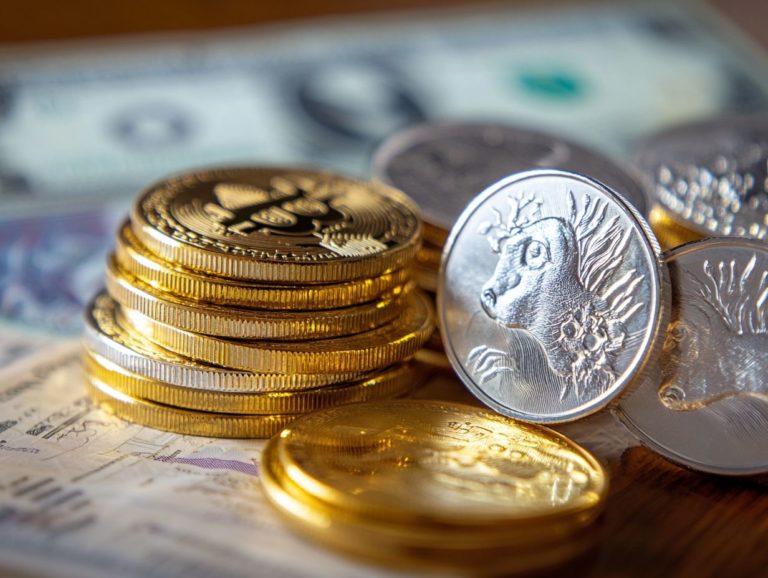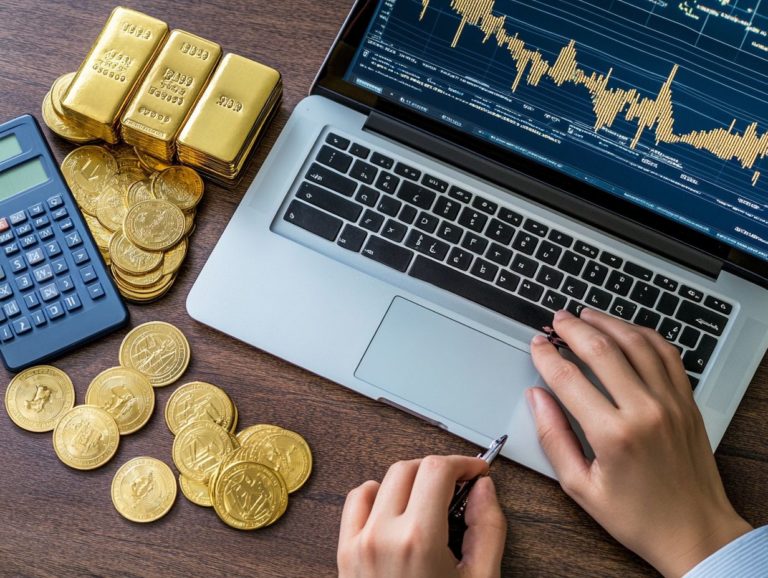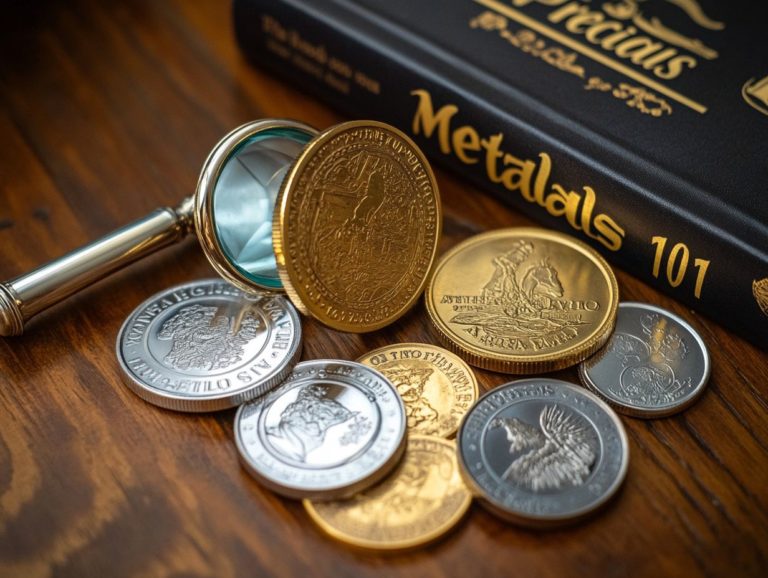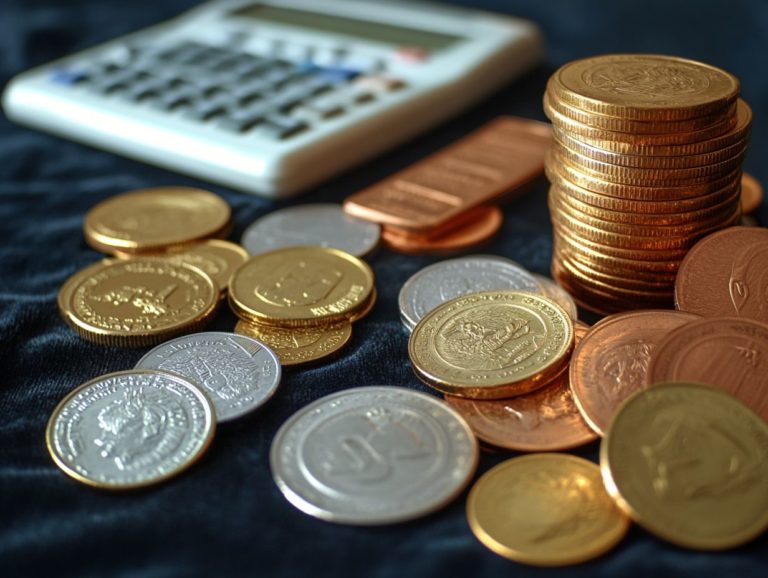How to Navigate Economic Downturns with Metals
Navigating economic downturns may seem daunting, but understanding the landscape empowers you to make savvy investment choices.
This article explores the causes and effects of economic declines on the market, highlighting the benefits of investing in metals as a strategy for diversification and stability.
You ll learn about different types of metals and discover effective investing strategies while considering potential risks.
We ll also review historical performance to give insights into the long-term outlook for metals during challenging economic periods.
Join us to uncover strategies that can help you thrive, even amidst turbulent markets.
Contents
- Key Takeaways:
- Understanding Economic Downturns
- Benefits of Investing in Metals during Downturns
- Types of Metals to Consider
- How to Invest in Metals during Downturns
- Risks and Considerations
- Long-Term Outlook for Metals during Downturns
- Frequently Asked Questions
- What are the best metals to invest in during an economic downturn?
- How can I protect my assets during an economic downturn with metals?
- Is it a good idea to sell my metals during an economic downturn?
- What are the advantages of investing in industrial metals during an economic downturn?
- How can I stay informed about the market for metals during an economic downturn?
- Are there any risks associated with investing in metals during an economic downturn?
Key Takeaways:
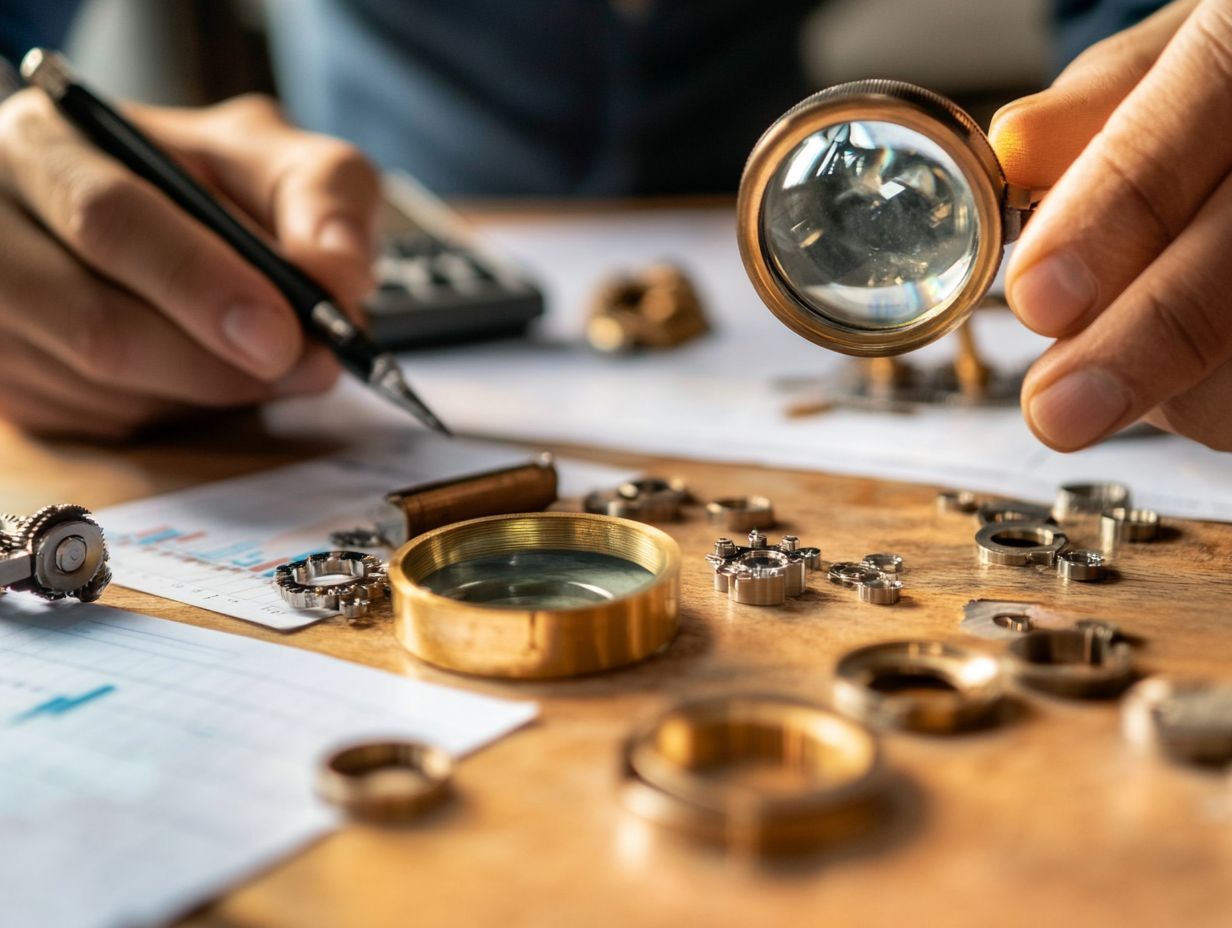
- Diversify your portfolio with metals during economic downturns to enhance stability and growth potential.
- Explore both precious and industrial metals to maximize your investment potential!
- Mitigate risks by developing a solid investment strategy and staying informed on market trends.
Understanding Economic Downturns
Understanding economic downturns is essential for you as an investor or financial advisor. These periods are marked by declining economic activity, rising unemployment, and reduced consumer spending, creating unique investment challenges and opportunities.
Historical events like the Great Recession and the recent COVID-19 pandemic have highlighted how delicate market dynamics can be. This reality urges you to conduct a comprehensive analysis of the underlying causes and effects that shape your investment strategies.
Causes and Effects on the Market
Economic downturns can arise from various factors such as harmful market trends, misguided economic policies, and external shocks like currency fluctuations and geopolitical conflicts.
These elements weave together to destabilize financial markets and diminish investor confidence. For example, when inflation rises, central banks may increase interest rates, which can dampen borrowing and spending.
This intricate interplay significantly impacts investment products. As costs rise, businesses often see profits shrink, making stocks less appealing. History has shown that proactive asset management is vital; during the 2008 financial crisis, those who diversified their portfolios fared much better than those who did not.
By understanding these economic indicators and preparing for downturns, you can greatly influence your long-term investment strategies.
Benefits of Investing in Metals during Downturns
Investing in metals during economic downturns can be your best move for stability and growth! Precious metals like gold, silver, platinum, and palladium are dependable assets that provide both diversification and wealth preservation during turbulent times.
These metals are in high demand because they are considered safe investments, especially when traditional investment avenues face uncertainties.
Diversification and Stability
Diversification is a crucial investment strategy that boosts your portfolio’s stability, especially during economic downturns when traditional markets can feel unpredictable.
By spreading your investments across different asset classes, you can effectively reduce the risks associated with market fluctuations, ensuring your resources are not solely tied to the performance of one sector. For example, allocating a part of your portfolio to precious metals like gold and silver offers a reliable hedge against inflation and currency devaluation.
Historical data shows that during crises, gold often outperforms other assets, with returns soaring as high as 25% in certain downturns. Precious metals typically have a low correlation with stock markets, meaning that while equities may decline, these tangible assets can retain their value or even appreciate, providing you with added financial security.
Types of Metals to Consider
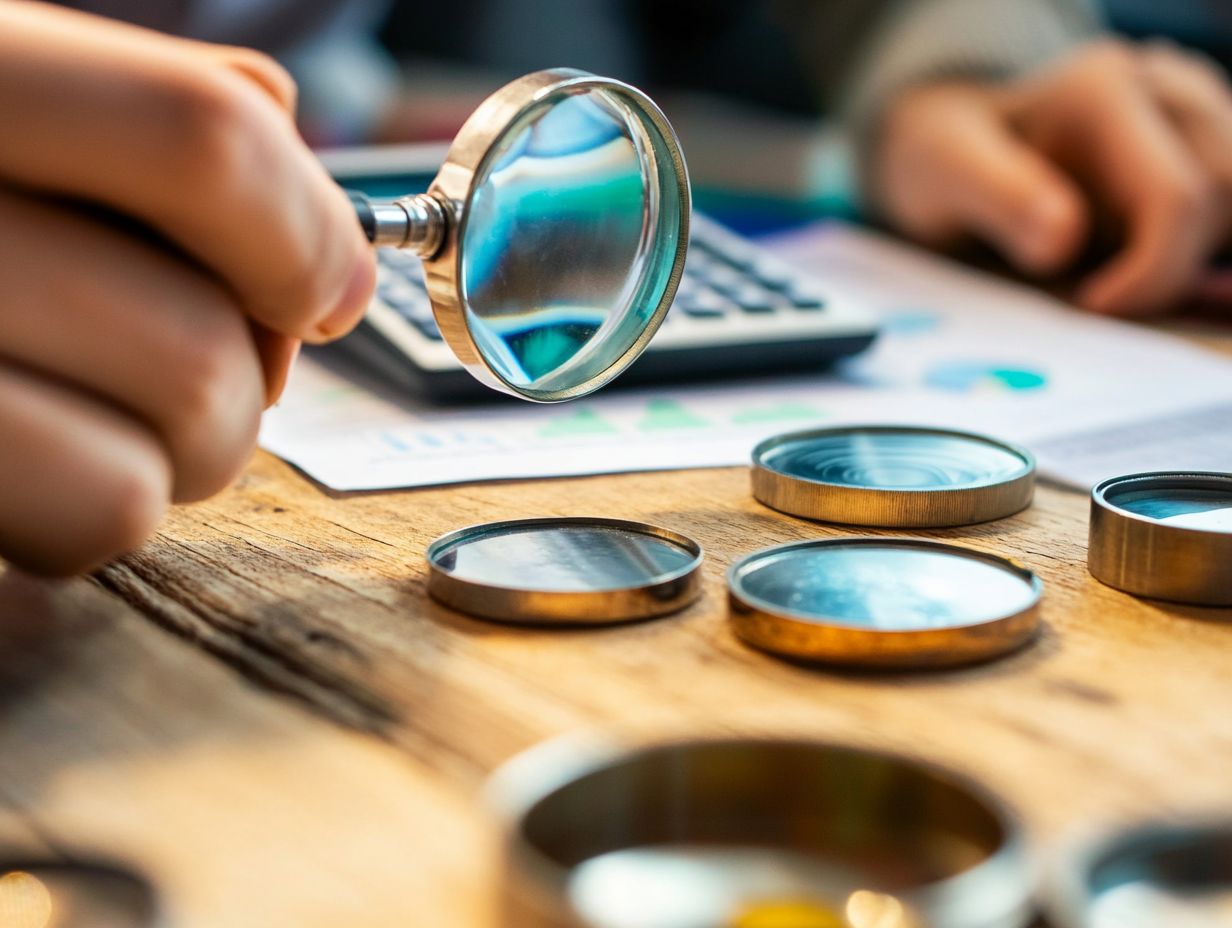
When evaluating investment opportunities during economic downturns, consider a range of metals. Focus particularly on precious metals like gold, silver, platinum, and palladium.
Don t overlook the potential of industrial metals that cater to specific market demands.
Precious Metals vs Industrial Metals
Understanding the distinctions between precious metals and industrial metals is crucial for you as an investor. Each category presents unique investment opportunities and financial advantages.
Precious metals, like gold and silver, are often seen as safe-haven assets. They offer a hedge against inflation and economic uncertainty. Historically, they’ve established themselves as reliable stores of value, attracting investors seeking stability during turbulent market conditions.
In contrast, industrial metals such as copper and aluminum are vital to modern manufacturing and construction. Their demand is closely tied to economic growth.
The ease of buying or selling assets for precious metals is typically higher due to global demand. However, industrial metals can experience fluctuations driven by market dynamics and technological advancements.
By grasping these characteristics, you can make informed decisions that align with your financial goals, ensuring a strategic approach to your investment portfolio.
How to Invest in Metals during Downturns
Investing in metals during downturns requires a strategic approach. Equip yourself with knowledge and insights from financial experts to navigate successful portfolio management and conduct thorough risk assessments.
Strategies and Tips for Success
Successful investing in metals relies on you adopting a well-researched investment strategy. Apply proven tips to navigate economic uncertainties.
To achieve this, skillfully recognize optimal market timing. Understand market cycles and economic indicators. Developing a strong grasp of economic resilience, which involves analyzing how different sectors react under varying conditions, is essential.
Stay alert to metal trends, such as shifts in demand for gold or silver in emerging markets. These insights will guide you toward potential opportunities.
Establishing a diversified portfolio encompassing various metals is key to mitigating risks. To maximize your returns, consider employing tax strategies for silver investors. Regularly rebalance your portfolio and stay informed about geopolitical events and economic policies to enhance your investment outcomes.
Risks and Considerations
When you invest, particularly in precious metals during economic downturns, recognizing the inherent risks and factors at play is essential for your success. This includes potential currency fluctuations, market dynamics, and various charges and expenses that may arise.
Potential Risks and How to Mitigate Them
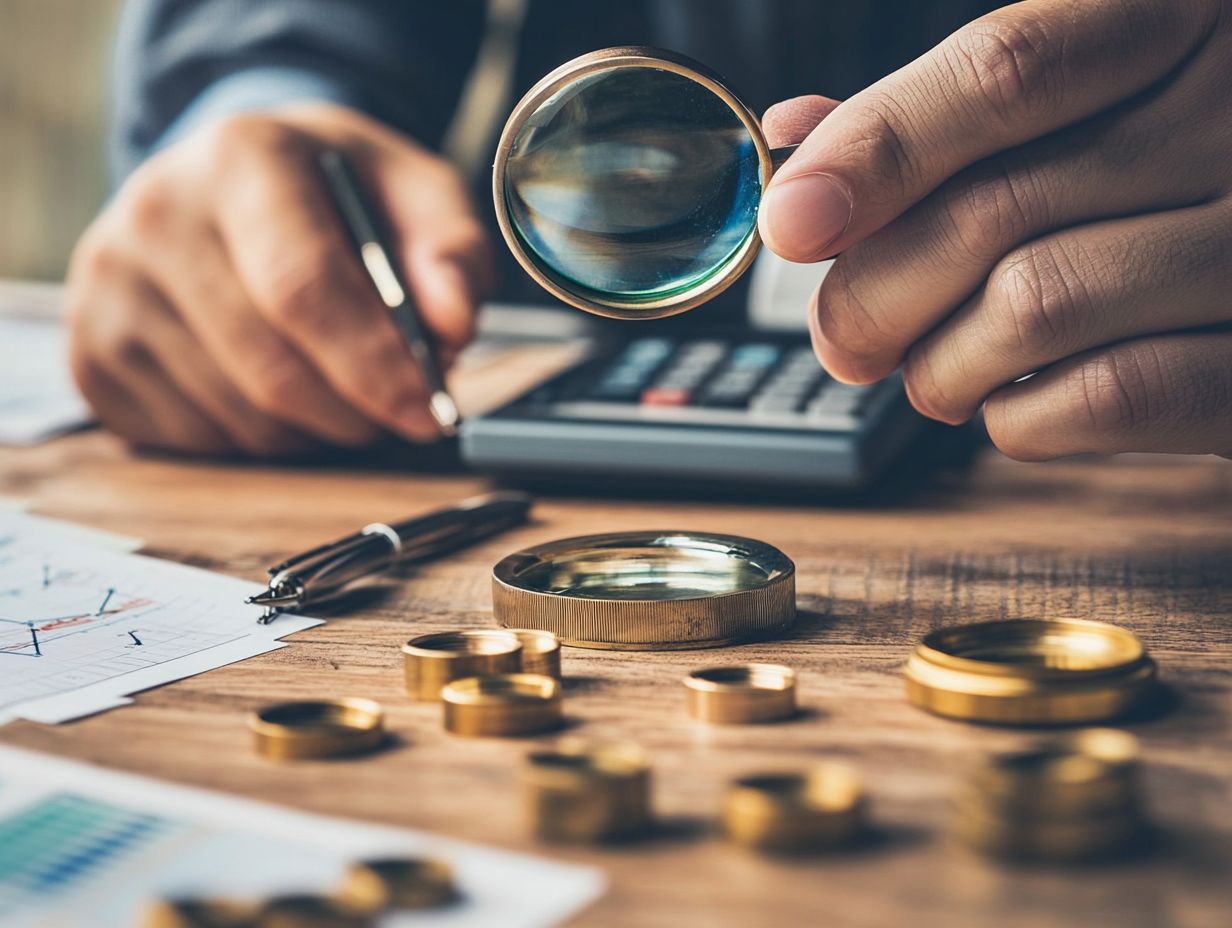
You need to remain vigilant about the potential risks of metal investments. Implementing effective mitigation strategies is essential for protecting your portfolio.
In the ever-fluctuating landscape of commodities, economic policies can significantly impact metal prices, often leading to unforeseen downturns. During market volatility, liquidity challenges may arise, complicating the buying or selling of assets without incurring substantial losses. It’s also important to be aware of tax considerations for precious metals in your portfolio to make informed investment decisions.
To counter these challenges, consider diversifying your portfolio across various metals and related assets to spread risk. Regular market analysis and staying informed about policy changes will empower you to make timely decisions.
Additionally, utilizing stop-loss orders can act as a safety net during turbulent times, providing you peace of mind as you navigate the market.
Long-Term Outlook for Metals during Downturns
The long-term outlook for metals during economic downturns is influenced by historical performance data and future predictions, making them essential elements of a resilient investment portfolio.
Including metals in your portfolio can help you better withstand economic challenges and position yourself to benefit from subsequent recoveries.
Historical Performance and Future Predictions
Examining the historical performance of metals provides valuable information about their reliability as assets during economic downturns, helping you formulate future predictions based on market trends.
Historically, precious metals like gold and silver often serve as safe havens during uncertain times, consistently recovering amid inflation or global conflicts. However, it’s important to be aware of the tax implications of selling precious metals to a dealer. Similarly, industrial metals such as copper and aluminum demonstrate remarkable resilience, reflecting shifts in global industrial activity.
By analyzing past events like the 2008 financial crisis or recent trade disputes, you can identify patterns indicating how these commodities might react to future economic challenges. Current data shows concerns about inflation and supply chain disruptions, suggesting that both precious and industrial metals may attract increased interest as investors seek stability and potential growth in these uncertain times. Additionally, understanding how to navigate complex tax issues with precious metals can further enhance your investment strategy.
Frequently Asked Questions
What are the best metals to invest in during an economic downturn?
Looking for the safest metals in tough times? Gold and silver are your best bets they tend to hold their value and even increase in price during economic uncertainty.
How can I protect my assets during an economic downturn with metals?
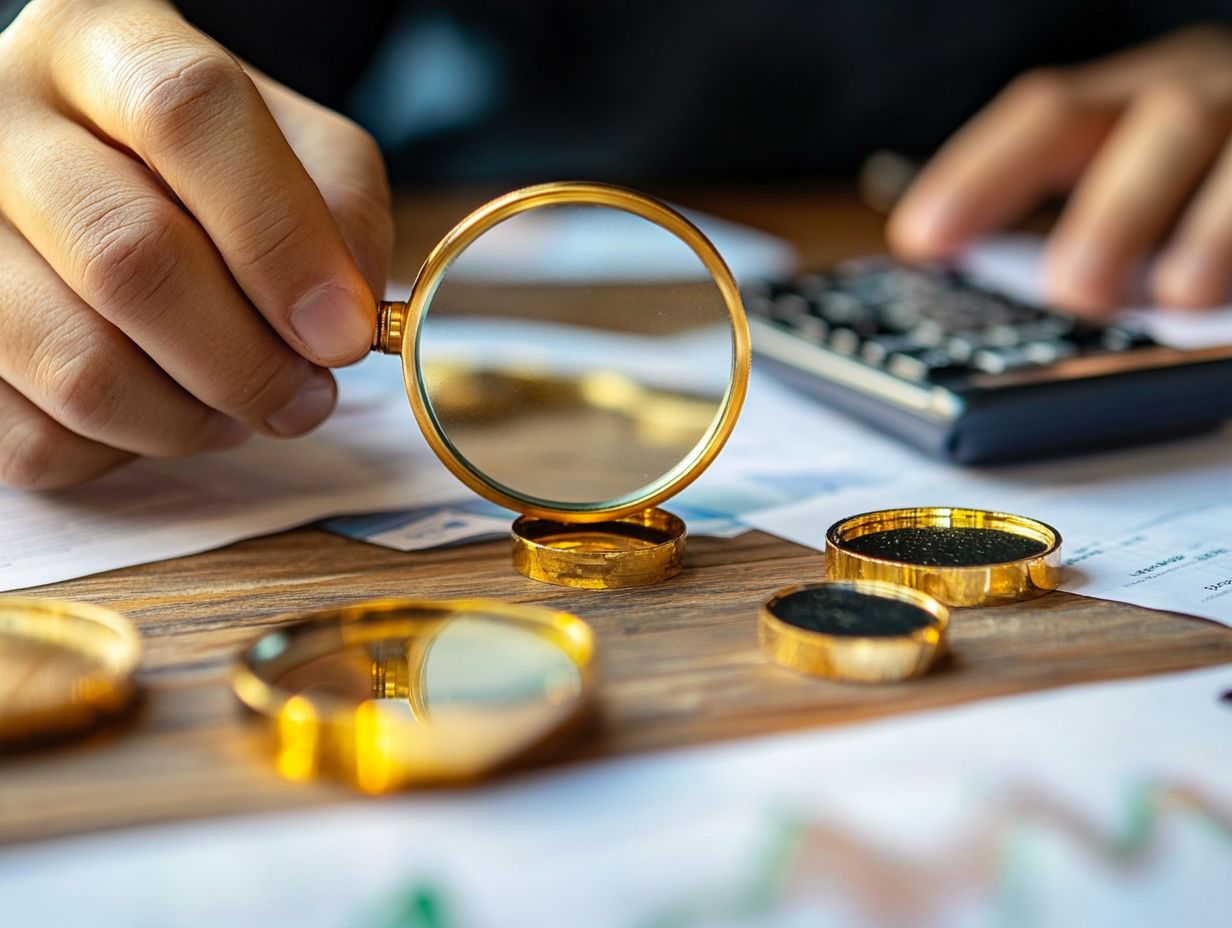
Diversifying your portfolio with a mix of metals, such as gold, silver, and platinum, can help protect your assets during economic downturns. These metals often have a negative correlation with the stock market, providing a hedge against market volatility.
Is it a good idea to sell my metals during an economic downturn?
It depends on your individual financial situation and goals. While it may be tempting to sell your metals to take advantage of high prices, think long-term your investment could pay off down the road.
What are the advantages of investing in industrial metals during an economic downturn?
Industrial metals, such as copper and aluminum, can see higher demand during an economic downturn due to their use in manufacturing and construction. This can lead to potential price increases and provide a unique investment opportunity.
How can I stay informed about the market for metals during an economic downturn?
Keep an eye on industry news and market trends to stay informed about the demand and prices of different metals. Working with a trusted financial advisor can also provide valuable guidance in navigating economic downturns with metals.
Are there any risks associated with investing in metals during an economic downturn?
As with any investment, risks are involved. Carefully research and consider the potential risks and rewards of investing in metals during an economic downturn. A financial advisor can help you navigate these risks effectively.










